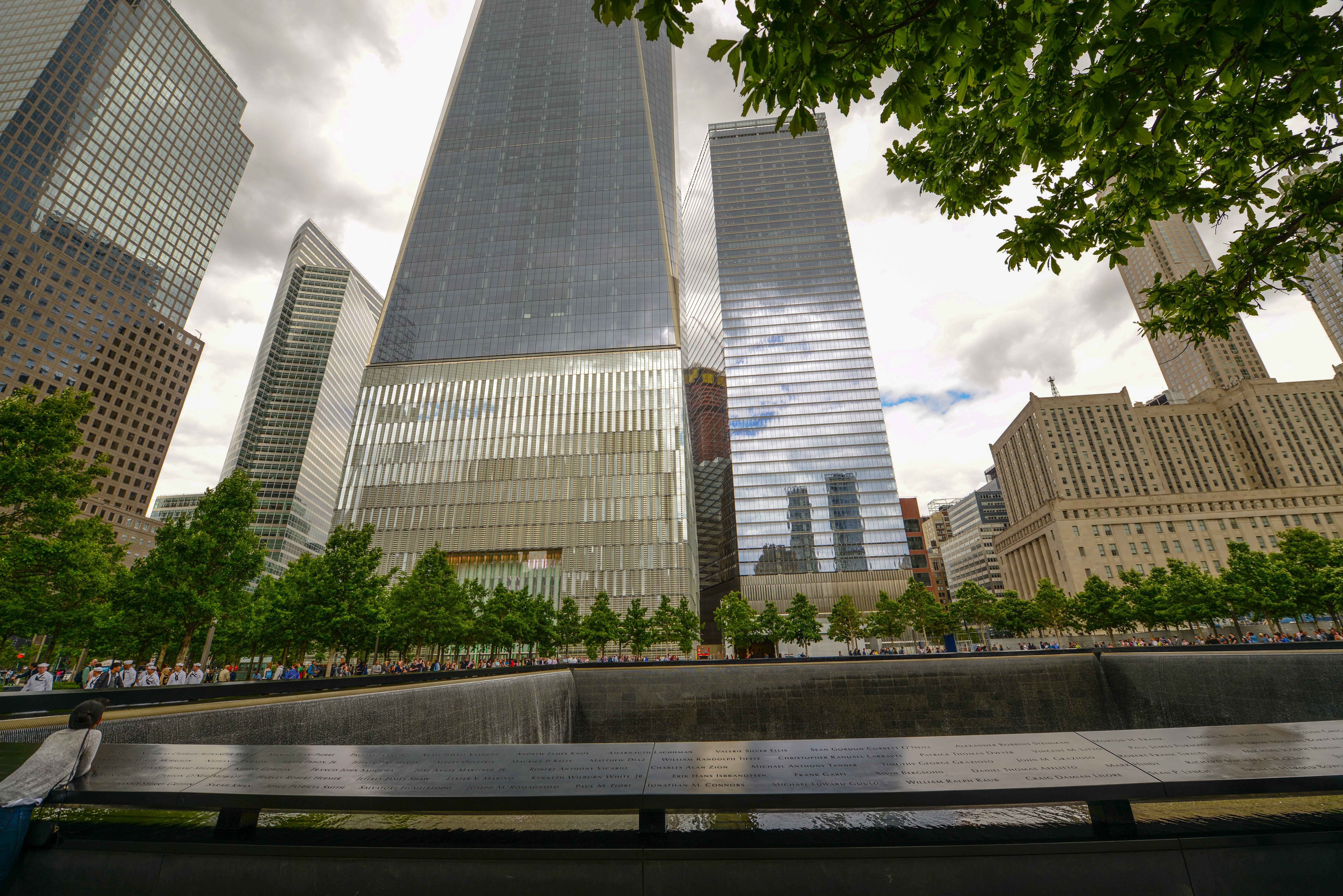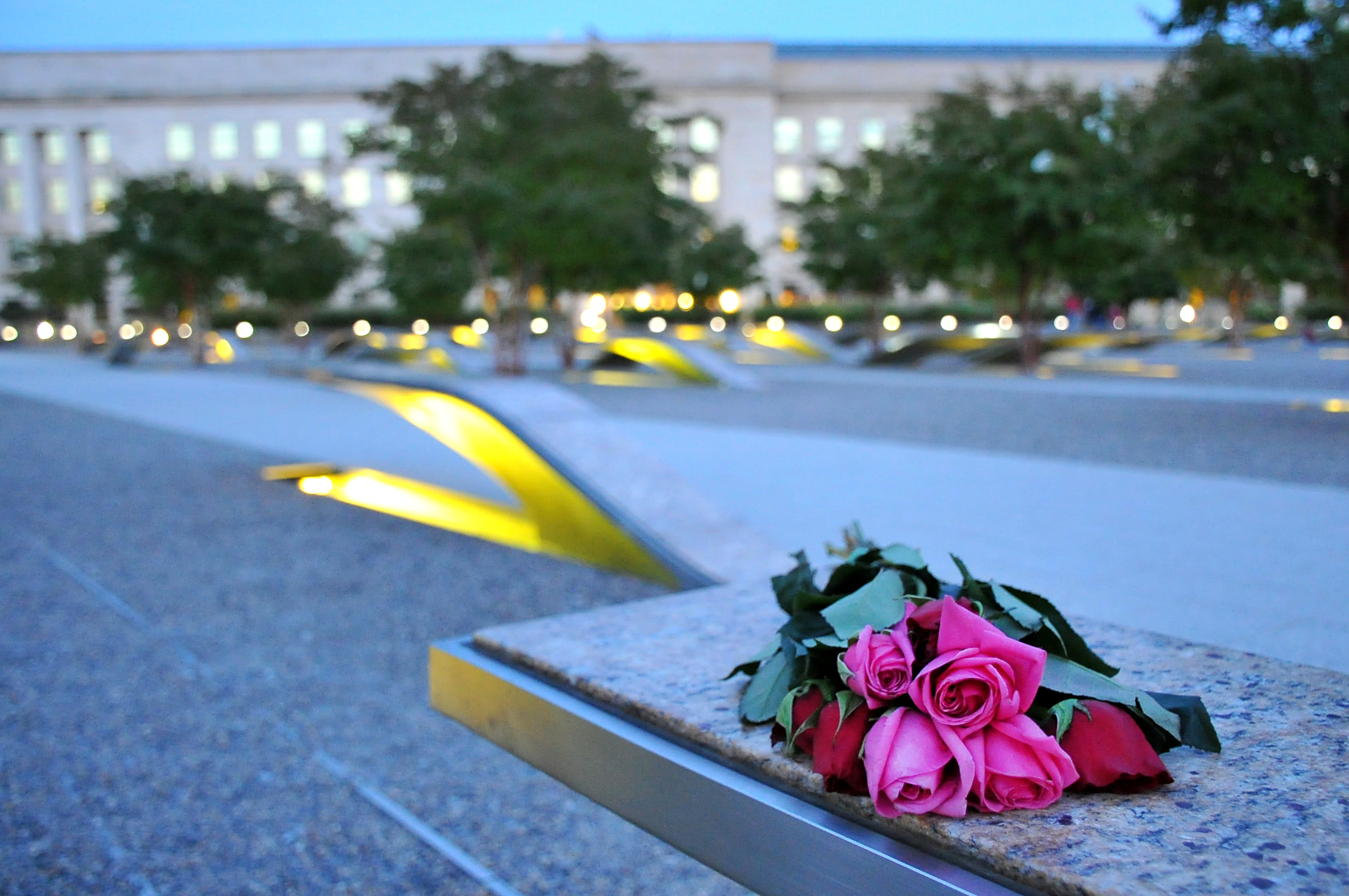VI. The Aftermath
The terrorist attacks of September 11, 2001, were unprecedented events in our nation’s history. The country reacted with shock, confusion, and sorrow. With a strong desire to prevent similar events in the future, policymakers quickly assessed the existing security and vulnerabilities of the country’s infrastructure. In response to the new threat, engineers would have to make buildings more secure and resistant to external threats, while also incorporating new safety features for those inside. For example, the Pentagon attack demonstrated that thick smoke obscured standard exit and evacuation signs, so officials retrofitted the building with new safety features, such as exit direction signs on the wall at floor level that would remain visible in a smoky room. Over the past twenty years, studies from the World Trade Center and the Pentagon attacks have led to improvements in fire resistance, redundant exits, hardening of fire suppression systems, and the placement of emergency escape masks for people in the building.
The U.S. Army Corps of Engineers, as a leading engineering organization, understood the implications of the September 11 attacks on multiple levels. First, the Corps reevaluated the security of its infrastructure and projects, mindful of the ever-present and constantly evolving balancing act between reasonable security and public access. Second, architects and engineers would have to consider security and survivability in all future projects. Indicative of this new approach, after the events of 9/11, Corps scientists from the Engineer Research and Development Center studied the Pentagon and World Trade Center buildings to determine why they behaved as they did during the attacks. They used the data they gathered to enhance future designs as well as retrofit existing buildings to harden them against attack or natural disaster. In addition, information learned from September 11 helped USACE design standoff protection against vehicle-borne threats, technology the Corps later used to enhance battlefield protection for soldiers. But perhaps the biggest change resulting from the attacks was a pragmatic assessment of the nation’s vulnerability to crimes like September 11 and a new appreciation of the lengths to which terrorists would go to inflict death and destruction.
USACE also evaluated its response to the September 11 attacks and found a great deal of which to be proud. First and foremost was the response of the employees of the New York District. Despite being displaced by the attack, they continued to work without access to offices, files, and adequate communications. The Corps’ floating plant crews in New York harbor responded within minutes of the aircraft hitting the Twin Towers to evacuate people from Manhattan and bring in supplies and emergency responders. The Corps of Engineers’ leadership, including Headquarters, the North Atlantic Division, and the New England District, drew upon decades of emergency operations experience in adeptly planning and managing the Corps’ response. Senior USACE leadership contacted the Federal Emergency Management Agency within hours of the attack, established a 24/7 Operations Center to coordinate the Corps’ response, and executed the USACE Emergency Management disaster response plan. Responding to the terrible events at the World Trade Center, USACE recognized that the City of New York would lead the effort, while at the same time, continued to support the city with urban search and rescue teams, structural engineers, and GIS mapping experts. In all, more than 300 USACE employees responded to the attack in New York.
 |
|
 |
|
The 9/11 Memorial Plaza in the foreground with One World Trade Center,
also known as Freedom Tower, in the background, May 2017.
U.S. Marine Corps photo by Lance Cpl. Troy Saunders.
|
|
September 11 memorial at the Pentagon, September 2014.
U.S. Coast Guard photo by Petty Officer 2nd Class Patrick Kelley. |
The experiences of September 11 resulted in some lessons learned and also revealed the need for change. Yet in other areas the Corps’ 9/11 experience validated its past planning. One hallmark of the USACE response—and a fact that was noted by every senior leader that day—were the actions of individual USACE employees. In the days and weeks after September 11 they were consistently willing to act on their own initiative if necessary, work under extremely arduous circumstances, function outside their normal structure or chain of command, and do virtually whatever was necessary to accomplish the mission. The Corps’ recently revised emergency operations framework—Readiness 2000—included trained and deployable Planning and Response Teams and subject matter experts, supported by a wide range of pre-negotiated contracts. All worked as envisioned. At the same time, it was clear that the scope USACE’s emergency operations planning would need to be scaled up to contend with potential similar disasters. Leaders also recognized that USACE organizations could be severely affected by disaster, so ensuring continuity of operations became a critical concern. In the wake of the attacks, USACE placed new emphasis on communications—not just the technology but a recognition of the critical importance of communications within the organization. The Deployable Tactical Operations System vehicles proved to be invaluable for disaster response. Finally, USACE’s role in support of FEMA and the local authorities, reinforced by liaison and personal relationships at every level, was a key factor in mission success.
Much has changed since the events of September 11, 2001. While the nation’s sense of grief and loss remains, the World Trade Center complex was rebuilt and the damaged wedges of Pentagon were restored. A nationwide effort to combat terrorism and secure infrastructure from attack is an ongoing effort even twenty years after the events of that fateful day. But aside from security and infrastructure, September 11 proved to be the opening act of the Global War on Terrorism. To combat the threat from terrorists, USACE personnel began to deploy to Afghanistan in 2002 and to Iraq in 2003 to support a coalition of military forces in those theaters and to undertake missions that ultimately spanned decades.
.JPG?ver=hl2fO_BnSMaUYqGF_A0A_g%3d%3d) |
Two examples, front and back, of the memorial coin presented to Corps of Engineers staff
to commemorate their service in response to the World Trade Center attack in New York.
Office of History. |
September 2021. No. 149.
Office of History's series of articles remembering the responses to the attacks of September 11, 2001